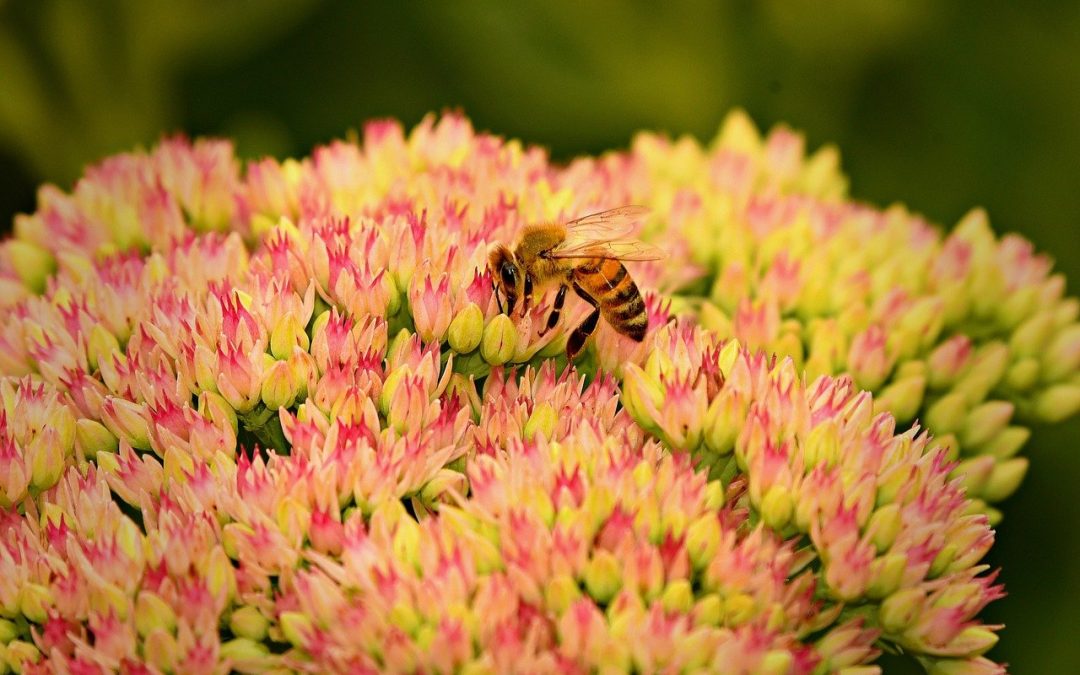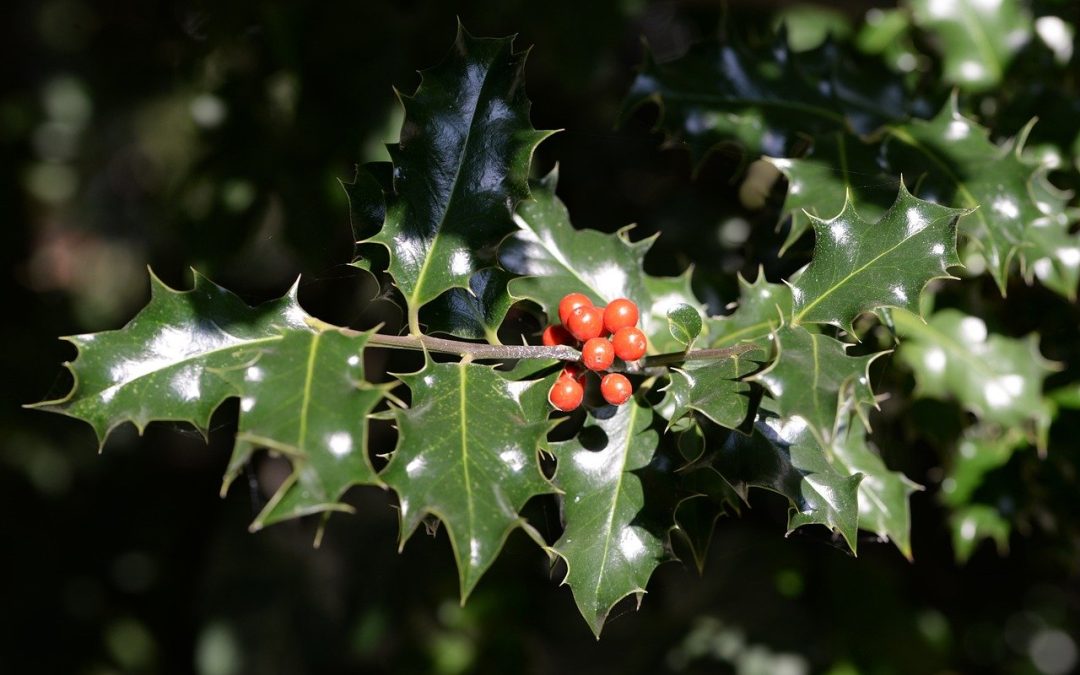
Seasonal Tips
Plant, Protect, and Prepare for a Successful Season
May is a pivotal month for gardeners in Southeast Wisconsin. With the soil warming and the last frost dates typically passing between May 10 and 20 , it’s the ideal time to dive into planting, maintenance, and preparation for a thriving summer garden. Here are five essential gardening tasks to focus on this month.
1. Plant Warm-Season Vegetables and Annuals
By mid-May, it’s generally safe to plant warm-season vegetables like tomatoes, peppers, squash, cucumbers, and beans. Soil temperatures should consistently reach at least 60°F for optimal growth. This is also the perfect time to add vibrant annuals such as marigolds, petunias, and zinnias to your garden beds and containers.
Planting Tip: Before transplanting seedlings started indoors, harden them off by gradually exposing them to outdoor conditions over a week. This process minimizes transplant shock and enhances their chances of thriving.
2. Divide Overcrowded Perennials
Spring is an excellent time to divide perennials like hostas, daylilies, and ornamental grasses.
- Encourages healthier, more vigorous plants
- Helps control the size of mature clumps
- Provides free plants to expand your garden or share with others
After dividing, water thoroughly and mulch around the new plantings to conserve moisture and reduce stress.
3. Feed Your Plants
The burst of spring growth can quickly deplete soil nutrients. Use a balanced, slow-release fertilizer to nourish your garden beds, shrubs, and trees. Be sure to choose fertilizers appropriate for specific plant needs, such as acid-loving varieties like azaleas and rhododendrons.
Fertilizer Tip: Applying fertilizer just before a rainstorm can help the nutrients seep into the soil more effectively.
4. Prune Spring-Flowering Shrubs After Bloom
Shrubs that bloom in early spring, such as lilacs, forsythias, and viburnums, should be pruned soon after they finish flowering. Proper pruning encourages:
- Better shape and structure
- More abundant blooms for next year
- Removal of any dead or damaged wood
Waiting too long to prune can reduce next year’s flowering.
5. Prepare for Common Pests
As the weather warms, insect pests such as aphids, slugs, and beetles begin to appear. Early preventative measures are important to keep damage minimal without resorting to heavy chemical use.
Pest Management Strategies:
- Encourage beneficial insects like ladybugs and predatory wasps
- Hand-pick larger pests whenever possible
- Use row covers to protect young vegetable plants
- Keep garden beds weed-free, as weeds can harbor pests
May is the Month of Opportunity
The work you put into your garden now will pay off all season long. Whether you’re planting new flowers, setting out vegetable transplants, or installing a fountain to create a peaceful retreat, Heritage Hill Nursery is here to help. Stop by for expert advice, fresh plants, and the tools you need to make this your best gardening season yet.

Specials
Celebrate the Season with Beautiful Additions to Your Garden
May is the perfect time to refresh your landscape, and Heritage Hill Nursery is excited to help you enhance your outdoor spaces with two special offers. Whether you’re looking to add a peaceful focal point to your garden or a hardworking native plant for groundcover, we have you covered.
45% Off All Fountains and Fountainettes
There’s nothing quite like the soothing sound of trickling water to bring tranquility to your garden or patio. Our curated collection of fountains and fountainettes offers something for every style—from classic tiered designs to naturalistic stone looks.
Why You’ll Love Our Fountains and Fountainettes:
- Create a peaceful, relaxing garden atmosphere
- Attract birds, butterflies, and other pollinators
- Add a dynamic visual and sound element to your landscaping
- Available in a variety of sizes, perfect for small spaces or large gardens
Now through May, enjoy 45% off all fountains and fountainettes. This is a wonderful opportunity to invest in a piece that will provide years of enjoyment.
Please note: All Sales Final
25% Off Aronia ‘Ground Hug’ Shrubs
For gardeners seeking a native groundcover that offers beauty and resilience, Aronia ‘Ground Hug’ is an outstanding choice. This low-growing variety of chokeberry provides four-season interest and requires very little maintenance once established.
Features of Aronia ‘Ground Hug’:
- Forms a dense, attractive groundcover perfect for slopes and erosion control
- Displays clusters of white flowers in spring
- Offers vibrant red and purple foliage in fall
- Highly drought-tolerant and adaptable to a range of soil types
- Provides important habitat and food for wildlife
For the month of May, take 25% off Aronia ‘Ground Hug’ shrubs.
Please note: This sale applies only to the ‘Ground Hug’ variety. Other chokeberry varieties are available at regular price. All Sales Final.
Visit Us This May
Heritage Hill Nursery is proud to offer high-quality plants and garden features that are well-suited to Southeast Wisconsin’s climate. Our team is here to help you find the perfect additions for your landscape. Stop by and take advantage of these May specials while supplies last.

Seasonal Tips, Trees - Planting & Care
April marks the start of true gardening season here in Southeast Wisconsin. The snow is gone (we hope!), the soil is warming up, and garden centers are bustling with excitement. Whether you’re a seasoned gardener or just getting your hands dirty, this month offers the perfect opportunity to prep, plant, and plan for a thriving season ahead.
Here are five essential April gardening tips to help you start strong:
1. Clean Up Your Beds – But Be Gentle with Pollinators
It’s tempting to go full throttle with your spring cleanup, but take a closer look before clearing leaves and stems. Many beneficial insects — especially native bees, butterflies, and ladybugs — are still sheltering in last year’s plant debris.
🧤 Tip: Start cleaning up around emerging perennials, but leave some areas undisturbed until temperatures are consistently above 50°F. This gives pollinators time to safely wake up and move on.
2. Test and Prep Your Soil
Before diving into planting, give your soil some love. A simple soil test can help you understand your garden’s pH and nutrient levels — a crucial step in making sure your plants thrive.
🧪 You can get a test kit from your local extension office or garden center.
🌱 While you wait for results, work in compost or well-rotted manure to add organic matter and improve drainage.
And don’t forget, early spring is the best time to apply a Pre-Emergent Herbicide, especially when adding soil amendments
3. Plant Cold-Hardy Vegetables & Annuals
Mid-to-late April is prime time for sowing cool-season crops like:
- Lettuce
- Spinach
- Kale
- Peas
- Radishes
- Broccoli and cabbage transplants
You can also start setting out cold-hardy annuals like pansies, violas, and snapdragons, which tolerate chilly nights and brighten up early beds and containers.
4. Prune Shrubs the Right Way
April is a great time to prune certain shrubs — but timing is everything. Use this simple rule:
✂️ Prune summer and fall bloomers now (like spirea, hydrangea paniculata, and potentilla)
🌸 Wait to prune spring bloomers (like lilac, forsythia, and weigela) until after they flower, or you risk cutting off this year’s buds.
Bonus Tip: Don’t prune roses too early! Wait until you see new growth beginning.
5. Mulch Smartly to Suppress Weeds and Lock in Moisture
As the soil warms, adding a fresh layer of mulch can:
- Suppress early weeds
- Hold in moisture
- Regulate soil temperature
- Give your beds a clean, finished look
Use 2–3 inches of shredded bark, straw, or leaf mulch, but keep mulch away from the base of plants and tree trunks to prevent rot and pests.
🌼 April is a Month of Momentum
This is the time to get your hands in the soil, take stock of your garden’s layout, and make plans for new plantings. Whether you’re sowing seeds, preparing beds, or simply soaking up sunshine on a garden bench, know that each small step you take now sets the stage for a thriving, beautiful season ahead.
Keep an eye on the forecast, listen to your garden, and don’t hesitate to visit us for expert advice and plant recommendations tailored to our region.

Specials
Spring is finally making its grand entrance here in Southeast Wisconsin — and at Heritage Hill Nursery, we’re embracing the season with beautiful blooms, cozy aromas, and can’t-miss April specials that will brighten both your garden and your home.
This month, we’re excited to offer exclusive discounts on two of our customer favorites:
- 45% Off all Candle Warmers, Melts & Candles
- 25% Off our incredibly fragrant Scentara Lilac shrubs
Let’s take a closer look at these limited-time offers and why you’ll want to make Heritage Hill Nursery part of your April plans.
🕯️ Cozy Up with 45% Off Candles, Melts & Warmers
After a long Wisconsin winter, there’s nothing better than coming home to the soft glow and welcoming fragrance of a fresh candle. Whether you’re celebrating the season with floral, citrus, or herbal notes, our candle collection is hand-picked to bring warmth and comfort into your space.
Why we love them:
- Flame-free options: Our candle warmers are a safer way to enjoy your favorite scents — perfect for homes with kids or pets.
- Seasonal fragrance blends: From blooming florals to refreshing clean scents, there’s something for every taste.
- Beautiful gift ideas: With Mother’s Day right around the corner, this sale is a great opportunity to grab thoughtful, budget-friendly gifts.
Now through the end of April, all candles, melts, and warmers are 45% off — but hurry! These items tend to go quickly, and all sales are final.
🌿 Breathe in Spring with 25% Off Scentara Lilacs
One of the most iconic scents of spring? Lilacs, of course! And there’s one variety that rises above the rest in fragrance, bloom quality, and garden performance — the Scentara Lilac.
This stunning shrub is everything a lilac lover dreams of: big, beautiful purple blooms with an incredibly rich perfume that fills the air. Even better? Scentara Lilac is specially bred to thrive in cooler climates, making it a perfect match for Southeastern Wisconsin landscapes.
Why gardeners love Scentara Lilac:
- Exceptional fragrance – More intense than traditional lilacs
- Earlier, longer-lasting blooms – Enjoy color and scent for weeks
- Hardy and reliable – Performs beautifully in zone 5 gardens
- Pollinator-friendly – Attracts butterflies and hummingbirds
Whether you’re planting a hedge, designing a fragrant front yard, or simply adding a showpiece to your landscape, Scentara Lilac won’t disappoint. This month only, take 25% off while supplies last.
📌 Please note: This sale applies only to the Scentara variety. Other lilac varieties are available at regular price.
🌸 Why Shop Now?
April is the start of planting season in Wisconsin, and it’s one of the most exciting times to visit the nursery. Perennials are popping up, trees are leafing out, and shrubs like the Scentara Lilac are getting ready to bloom. Our staff is here to help you plan and shop for everything from new garden beds to spring gifts.
When you shop our April specials, you’re not just saving — you’re investing in beauty, fragrance, and warmth for your home and garden.
✅ Support a local, family-owned nursery
✅ Get expert planting advice tailored to our region
✅ Explore new arrivals and seasonal highlights
✅ Enjoy one-on-one help from passionate plant lovers
Don’t Miss Out – These Deals End April 30!
These sales are available through the month of April, or while supplies last. With discounts this deep and the gardening season just beginning, you won’t want to miss the chance to save.
Visit us soon and treat yourself to:
🌼 A garden full of sweetly scented lilacs
🕯️ A home that smells like spring
🌸 A fresh start to the planting season!
🌿 Stay connected for more seasonal tips, plant spotlights, and expert advice made just for Wisconsin gardens. And don’t forget to follow us on Facebook and Instagram for behind-the-scenes peeks and fresh arrivals!

Seasonal Tips, Trees - Planting & Care
As the temperatures start to dip and the days get shorter, October is a critical month for gardeners in Cedarburg, WI. The fall chill brings new challenges, but it’s also the perfect time to prepare your garden for winter and set it up for a successful spring.
Whether you’re wrapping up the last of your harvest, tending to your perennial beds, or taking steps to protect your plants from frost, there are plenty of tasks to keep you busy. Follow these October gardening tips to ensure your landscape stays healthy through the cold months ahead.
1. Clean Up the Garden
One of the most important tasks for October is cleaning up your garden beds. As plants start to die back, it’s essential to remove any spent annuals, vegetables, and diseased plant material to prevent pests and diseases from overwintering in your garden.
- Remove Dead Plants: Pull out any annuals that have finished their lifecycle and dispose of them, especially if they show signs of disease or pest damage.
- Cut Back Perennials: Trim back perennials after the first frost, but leave a few seed heads like coneflowers and black-eyed Susans for wildlife. Birds love to snack on the seeds during the winter months.
- Weeding: Weeds can still sprout in the cooler weather, so take the time to remove any stubborn weeds before they go to seed. This will give you a head start for next spring.
A clean garden not only looks better, but it also reduces the risk of harboring unwanted pests and diseases that could affect next year’s growth.
2. Prepare Your Soil for Spring
While it may seem like spring is far off, October is an ideal time to start preparing your garden soil for next year. Improving your soil now will give it plenty of time to settle over the winter, resulting in a healthier, more fertile growing medium come spring.
- Add Compost: Spread a layer of compost over your garden beds to enrich the soil with organic matter. This will help improve the soil’s structure, water retention, and nutrient content. The freeze-thaw cycles of winter will help work the compost into the soil naturally.
- Mulch: Apply a thick layer of mulch around your perennials, shrubs, and trees. Mulch acts as insulation, helping to regulate soil temperature and retain moisture during the winter. It also suppresses weeds and prevents erosion. Choose organic mulches like shredded leaves, straw, or wood chips, which will break down over time and further enrich your soil.
3. Plant Bulbs for a Spring Spectacle
October is the last chance to plant spring-flowering bulbs like tulips, daffodils, hyacinths, and crocuses. These bulbs need to be in the ground before the soil freezes to ensure they get the cold dormancy they need to bloom beautifully in spring.
- Choosing Bulbs: Select healthy, firm bulbs for planting. Look for varieties that are well-suited to your climate, and choose a mix of early, mid, and late-season bloomers to extend your spring display.
- Planting Depth: A good rule of thumb is to plant bulbs at a depth of about three times their height. For example, a 2-inch bulb should be planted about 6 inches deep.
- Group Planting: For the most striking visual effect, plant bulbs in clusters or drifts rather than in straight lines. This will create a natural, flowing look when they bloom.
4. Harvest the Last of Your Fall Vegetables
If you’ve been growing a fall vegetable garden, October is the time to bring in the last of your harvest before the first hard frost.
- Cool-Season Veggies: Vegetables like kale, spinach, and broccoli can tolerate light frosts, so they may continue to produce into October. Keep an eye on the weather forecast and cover these crops with row covers or frost blankets if a hard freeze is expected.
- Winter Squash and Pumpkins: Harvest winter squash and pumpkins before the first hard frost, as freezing temperatures can damage the skin and affect storage quality. Store them in a cool, dry place to enjoy throughout the winter.
- Root Vegetables: Crops like carrots, beets, and parsnips can be left in the ground until the first frost, which actually improves their flavor. However, be sure to harvest them before the soil freezes solid.
5. Protect Your Plants from Frost
In Cedarburg, WI, the first frost typically hits in mid-to-late October, so it’s important to be prepared to protect your more tender plants.
- Frost Blankets: Have frost blankets or old bedsheets on hand to cover plants like peppers, tomatoes, and basil if frost is in the forecast. Covering plants overnight can give them a few extra weeks of productivity before the cold shuts them down completely.
- Bring Container Plants Indoors: Any tender plants that are growing in containers, such as herbs or tropical plants, should be moved indoors before the first frost. Be sure to inspect them for pests before bringing them inside, and gradually acclimate them to the indoor environment by bringing them in at night and leaving them outside during the day for a few days.
6. Divide and Transplant Perennials
October is an excellent time to divide overgrown perennials and transplant them to new areas of your garden. Dividing perennials not only helps control their size, but it also promotes healthier, more vigorous growth.
- When to Divide: If your perennials have become too crowded, or if they are flowering less than usual, it’s time to divide them. Plants like hostas, daylilies, and irises benefit from being divided every few years.
- How to Divide: Carefully dig up the plant, being sure to preserve as much of the root system as possible. Use a sharp spade or knife to divide the root ball into sections, each with at least a few shoots and a healthy portion of roots. Replant the divisions immediately and water well to help them settle in.
7. Watering in Fall
Don’t stop watering your garden just because the temperatures are cooler. Trees, shrubs, and perennials need plenty of moisture in the fall to help them survive the winter.
- Deep Watering: Water your trees and shrubs deeply, especially if the weather has been dry. This will ensure their roots are well-hydrated going into the winter months. A thorough soaking once a week is usually sufficient.
- Winter Drought Protection: In dry winters, evergreens and newly planted trees and shrubs can suffer from winter drought. Be sure they’re well-watered before the ground freezes to minimize the risk of damage.
8. Prepare Your Garden Tools and Outdoor Decor
As gardening season winds down, October is the perfect time to care for your garden tools and protect outdoor decor, especially items vulnerable to winter weather.
- Clean and Sharpen Tools: Wash off any soil or debris from your tools, and sharpen blades on pruners, shears, and shovels. Proper maintenance now will extend their life and ensure they’re ready to use in spring.
- Store Properly: Keep tools in a dry, sheltered area, and apply a thin coat of oil to metal surfaces to prevent rust during the winter months.
In addition to tools, concrete bird baths, fountains, and other statuary that can retain water should be either wrapped in protective waterproof coverings or moved indoors. Water that remains in these structures can freeze and thaw throughout the winter, causing cracks that compromise their integrity. Protecting them now will prevent damage and ensure they’re ready to enjoy again in the spring.
By following these October gardening tips, you’ll not only protect your plants and prepare them for winter, but you’ll also set the stage for a vibrant, thriving garden come spring. Whether you’re cleaning up, planting bulbs, or harvesting the last of your vegetables, there’s plenty to do to keep your garden in top shape this month. Happy gardening!





